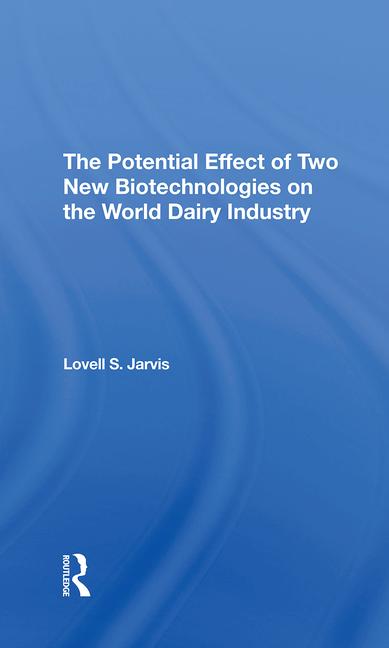
Something Old, Something New
by James Dudlicek
Editor
Editor
Butter manufacturing and high-tech logistics comprise the other side of Organic Valley.
In a town of 300 souls, a
plant closing can be devastating. In Chaseburg, Wis., where the creamery
has operated for eight decades, it almost was, when the facility closed for
28 months in the late 1990s.
Then in May 1999, Organic Valley – based some 30
miles east – acquired the creamery, which has ridden the organic
gravy train ever since. Lucky thing, too, considering the plant provides
the bulk of the tax revenues for the tiny town, which includes perhaps
three or four other businesses.
When Organic Valley reopened the Chaseburg Creamery,
folks thought it might process about 12 million gallons of milk in a year,
recalls Jeff Kragt, director of production and manufacturing. “They
do that in a month now,” he says.
The plant – certified organic by Oregon Tilth
– takes in about 10 truckloads of milk daily from member farms within
the Organic Valley cooperative. The facility receives and pasteurized seven
days a week, and churns for six, Kragt says. Milk arrives through two
receiving bays; there’s also a bay for loading out pasteurized cream
that’s sold to other customers including an organic ice cream maker.
Five cream processing tanks ranging from 1,500 to
2,500 gallons, plus a 10,000-gallon silo, feed to the batch churn (versus the continuous churns
used in most modern butter plants). Each churning cycle uses about 7,000 pounds of cream to
make a 3,500-pound batch of butter, and the plant churns on average about
14,000 pounds of butter per day, an output that varies by season, Kragt
explains. Butter made in Chaseburg is sold under the Organic Valley brand
as well as some private labels.
Two types of butter come out of the Chaseburg Creamery
– the standard salted butter that most consumers are used to, and a
European-style cultured unsalted butter that contains live and active
cultures.
From the churn, finished butter is transferred to a
trolley that takes it to the packaging line. There, the butter is pressed
into paper-wrapped quarters that are packed into one-pound boxes.
The plant was founded in the 1920s as the Chaseburg
Cooperative Creamery. It was sold in the 1980s and eventually wound up in
the hands of Swiss Valley in 1997.
Since its acquisition by Organic Valley, the Chaseburg
plant has undergone constant expansion and renovation. Among the changes
have been new cream silos to accommodate the ever-increasing demand for
product, a bulk cleaning-solution system, a truckers’ lounge and
enclosing of the loading dock, which also brought a badly needed expansion
of office space. In 2006, Organic Valley added a wastewater treatment
facility to reduce the burden on municipal services and retain organic
solids from rinse water. These solids are delivered to a local farm, which
blends them in as part of a methane gas generator to produce electricity.
Boosting Logistics
In 2004, Organic Valley established Organic Logistics
LLC, a subsidiary that provides public warehousing and transportation for
the organic and natural foods market. By teaming up with 81 independent
milk haulers in 28 states, 12 freight carriers in 50 states and 20
distribution locations across the country, the company has handled an
additional $4.3 million of freight. This has helped Organic Valley’s
trade partners move their products at competitive rates and send out more
full truckloads of goods in the face of high fuel prices.
Planning for the company’s Midwest distribution
center began in 2003 and culminated in the July 2007 grand opening of its
$17.5 million, 80,000-square-foot facility in Cashton, Wis., after 14
months of construction. Located on a 40-acre tract between the La Farge
corporate headquarters and the Chaseburg Creamery, and convenient to
interstate highways, the facility includes a 33,000-square-foot automated
storage and retrieval system.
In addition to handling the co-op’s
Midwestern fluid milk and national specialty products, the
certified-organic facility in Cashton offers public warehousing
services to this market segment. The center is set up to handle dairy
products, meat, produce, eggs, butter, meat and packaging materials.
All products except fresh produce move through the
center’s ASRS, explains Doug Muller, project and maintenance manager.
Arriving products are checked for size and travel up and elevator into the
computer-controlled system.
Two automated cranes move products around the racks
that rise 11 levels high to about 80 feet above the floor; a third crane
services the freezer. The cranes regenerate their own power as they are
raised and lowered.
Full pallets leave the ASRS through two doors, one
each for the cooler and freezer, then travel down a conveyor for load-out
through one of 12 docking bays available for shipping and receiving. There
are also pick tunnels to allow hand-picking of products for individual
customers. “Not all our customers want a full pallet of
product,” Muller notes.
Elsewhere at the facility, a manually sorted
dry-storage area is kept at ambient temperatures for packaging material,
some produce and dry powdered milk. A produce cooler is zoned to store
fruits and vegetables at three different temperatures. The meat cooler is
kept at 28 degrees F and features a side room equipped with a blast freezer
than can provide temperatures down to -44 if needed.
Serving small customers as well as large within the
diverse organic segment, the facility offers an at-grade dock to
accommodate deliveries by vehicles smaller than a semi. “We’ve
had a school bus pull up with product,” Muller says. “We
get Amish buggies.”
Following the lead of the corporate headquarters
building opened a few years ago, the Cashton distribution center is a
“green” facility. It’s a high-rise building that requires
a smaller overall land footprint and demands less manpower to service. A
white PVC roof reflects heat, and the ASRS will operate unlighted except
when hands-on servicing is needed. Waste heat from the refrigeration system
is used to heat the ground below the freezer area to prevent winter frost
heaves, Muller explains.
In addition, recycled materials – from
structural steel to office furniture – were used whenever possible.
“We did as much as we could,” Muller says.
CHASEBURG CREAMERY AT A GLANCE
Location: Chaseburg,
Wis.
Year opened: Acquired in 1999 after 2-year closure; plant dates to 1920s.
Size: 13,000 square feet
Employees: 30
Products made: Organic cultured and uncultured butter (branded and private label).
Capacity: 14,000 pounds of butter per day; HTST up to 45,000 pounds per hour.
Year opened: Acquired in 1999 after 2-year closure; plant dates to 1920s.
Size: 13,000 square feet
Employees: 30
Products made: Organic cultured and uncultured butter (branded and private label).
Capacity: 14,000 pounds of butter per day; HTST up to 45,000 pounds per hour.
DISTRIBUTION CENTER
AT A GLANCE
Location: Cashton,
Wis.
Opened: July 2007 (ground broken May 2006)
Size: 80,000 square feet, including 33,000 ASRS (12,000 pallet spaces), 14,000 loading dock and 19,280 conventional warehousing (1,000 pallet spaces).
Employees: 85
Purpose: Organic Valley’s primary warehouse and distribution center, handling fluid milk products from the Midwest and national specialty products.
Special features: Constructed with fly ash in cement, recycled steel, recycled cotton insulation, white roof to reflect heat.
$OMN_arttitle="Something Old Something New";?>
$OMN_artauthor="James Dudlicek";?>Opened: July 2007 (ground broken May 2006)
Size: 80,000 square feet, including 33,000 ASRS (12,000 pallet spaces), 14,000 loading dock and 19,280 conventional warehousing (1,000 pallet spaces).
Employees: 85
Purpose: Organic Valley’s primary warehouse and distribution center, handling fluid milk products from the Midwest and national specialty products.
Special features: Constructed with fly ash in cement, recycled steel, recycled cotton insulation, white roof to reflect heat.




